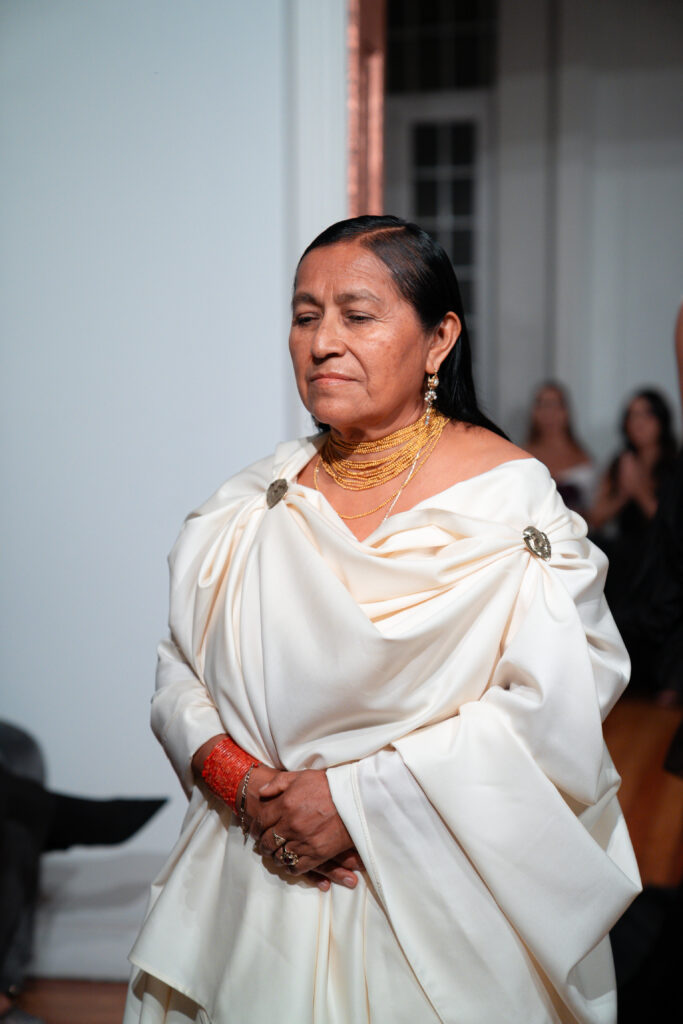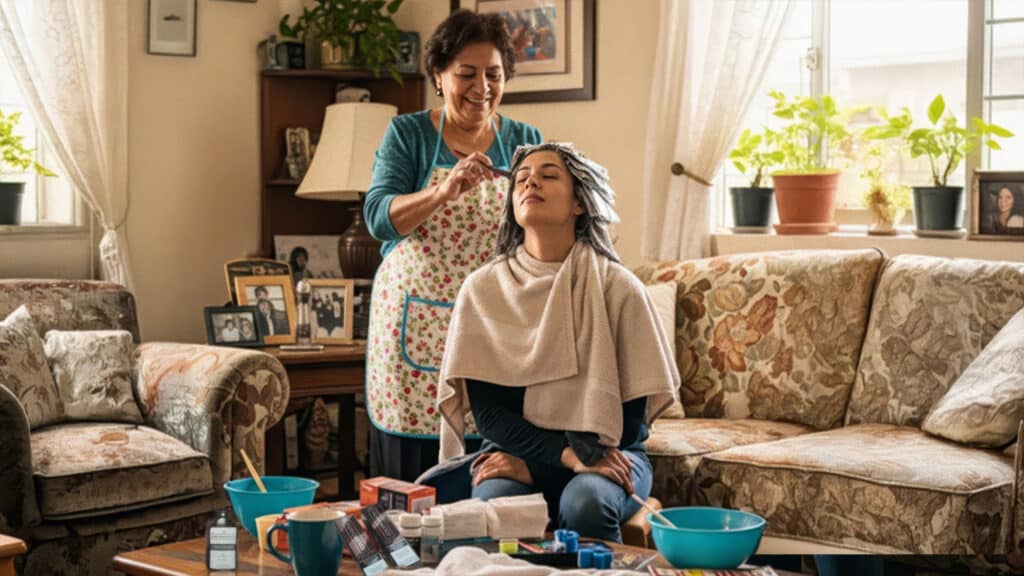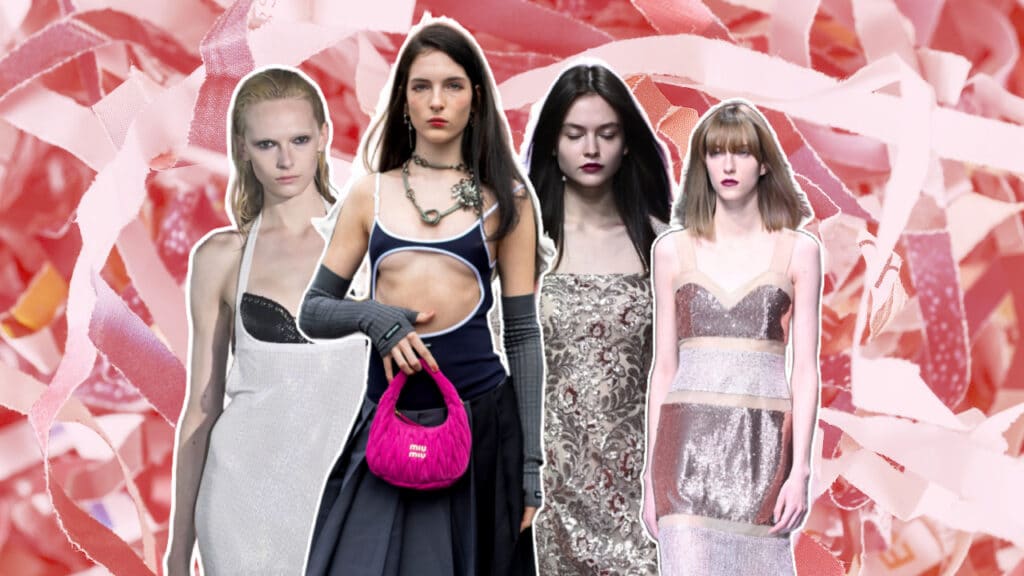Neithan Herbert Put Ecuadorian Indigenous Representation in Fashion Front and Center With Their Mom Leading the Way
Neithan Herbert, the brainchild of Mexican-Ecuadorian siblings Neithan and Anga Ruiz, presented its latest collection on August 26, in a manor in Colonia Roma, Mexico. Aptly titled “Raíz sin Tierra,” the runway opened with the strut of Etelvina Pillajo Campo, Neithan and Anga’s mother.
This was no regular runway cameo. Mamá Etelvina, as the brand presented her on social media, was the starting point of a collection celebrating heritage. As an indigenous woman from the Otavalo community in Ecuador, she represented the very essence of “Raíz sin Tierra.”
Mamá Etelvina modeled, dressed in a full white look. It was a reinterpretation of her community’s traditional anaco (wool skirt) and fachalina (shawl). She also carried Otavaleñas’ signature walkas (gold bead necklaces) and coral bracelets. The sight was as stylish and fashion-forward as it was moving and meaningful.
Neithan Herbert is opening space for Ecuadorian Indigenous representation
Not long ago, it was rare to see Indigenous representation, especially Ecuadorian Indigenous representation, in mainstream fashion, beauty, and entertainment. Various generations of Indigenous women were often encouraged to assimilate into dominant cultures. Mestizas like myself grew up watching our indigenous grandmothers or mothers resisting outward pressure to change their way of living, talking, or dressing.
I grew up in an urban neighborhood in the Ecuadorian capital, Quito. The area was, historically, an indigenous and agricultural hub. However, due to the city’s redistribution of rural and urban spaces, the lands that belonged to my grandparents and had previously belonged to their grandparents, and so on, ended up being labeled as “urban zones.” With this label came the erasure of our history and indigenous identity, as well as the reduction of agricultural spaces. Over the years, the area turned into a residential neighborhood.

Clothing as a form of resistance
My grandmother and a couple of her generation’s peers, who had grown up loyal to their traditions, were suddenly out of place in their own land. That left them exposed to the criticism and mockery of people who settled in what once belonged to them or their ancestors. Not seldom, they were regarded with disdain. But whether they were affected or not, they’d never let it show.
They continued to host traditional celebrations, expanding their land holdings and raising livestock. However, the mishu (Quichua for white people, but in this case, white-passing mestizos) complained about roosters crowing in the morning or the smoke coming from their traditional wood stove.
The women also wore their traditional attire proudly. Many of them, if not all, carried their anacos and coral necklaces til their last days. My grandmother, who passed away aged 95, only dropped her anaco following an accident and after much insistence from her doctors. It did not happen without complaints, but she let everybody know she was to be buried with her anaco. She’d make it up by wearing coral necklaces twice the size, putting on the gold earrings reserved for celebrations, and never changing her traditional slippers. Braiding her hair with a pabilo was also non-negotiable.
Beyond Indigenous Tokenization
Neithan Herbert’s collection, as well as the many demonstrations of Indigenous fashion creativity thriving in recent years, are a win for the Indigenous women, like my grandmother, who resisted assimilation. Watching these women represented in fashion, not as artisans or far-away inspirations, not portrayed as vulnerable and precarious, but as muses and models, reshapes narratives in the industry.
By placing an Indigenous and maternal figure at the center of its runway, the brand proved that Indigenous women of all ages belong in every space, including fashion. They don’t need to change, water down their origins, or meet certain standards to fit in.
As the brand explained in a press release, Mama Etelvina set the tone for the runway. She opened the show because she represented what the collection was about: “the nomadic roots and the artisan tradition that has accompanied the [Ruiz] family for generations.” Her presence wasn’t performative or tokenized; it was needed.
The rest of the collection, the model casting, and the guest list were equally inspiring. Yalitza Aparicio watched the show from the front row, while a diverse list of models walked down the runway. The list spanned people of diverse origins and ages, including model and activist Juana Burga, founder of Indigenous Futurisms, and actress Adriana Paz.
In fact, Burga and Paz, along with Mamá Etelvina, shut down the show, walking hand in hand.
I wish Mamá Petrona, my beloved Indigenous grandmother, were here to see women like herself leading the way.




